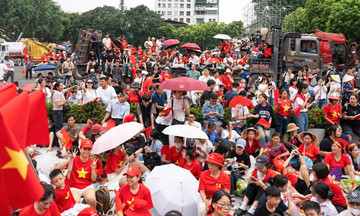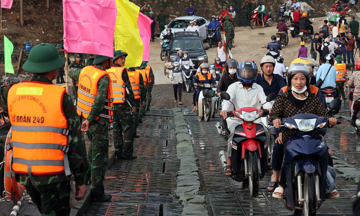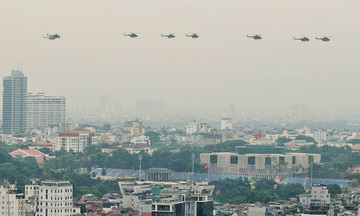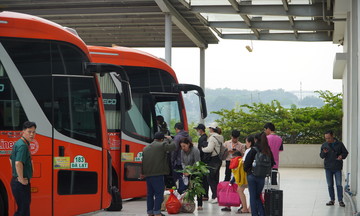At the Hanoi People's Council's question-and-answer session on food safety on 9/7, many delegates raised concerns regarding the management of street food stalls, mobile vendors, and livestock slaughtering and consumption facilities.
Delegate Duy Hoang Duong expressed worry about food safety issues stemming from street food vendors, especially those located near schools. He requested solutions from the Department of Health and the Department of Education and Training to ensure food safety for this type of business.
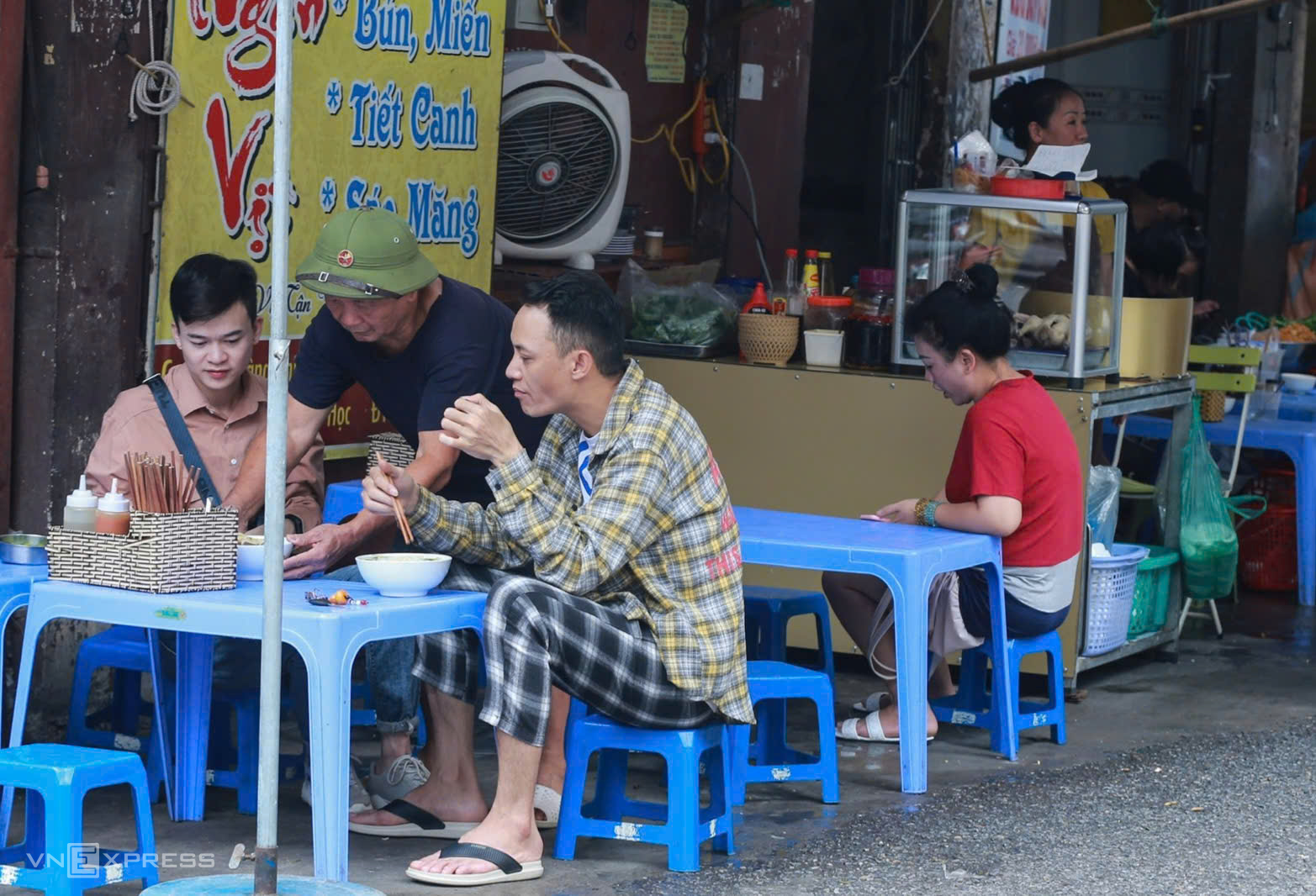 |
Street food stalls on Hang Chieu street, Hoan Kiem district. Photo: Giang Huy |
Street food stalls on Hang Chieu street, Hoan Kiem district. Photo: Giang Huy
Acting Director of the Department of Health, Nguyen Dinh Hung, reported that the city has 3,500 collective kitchens and nearly 7,000 street food vendors concentrated near 600 schools, universities, and bus stations. "70% of these street food stalls have difficult-to-trace origins," Hung said.
He pointed out several reasons for this issue: some business owners lack awareness of food safety, the large number of food businesses, especially small-scale ones, makes management challenging, and local authorities haven't strictly controlled street food or implemented digital technology for traceability.
Vice Chairwoman Vu Thu Ha stated that the city has implemented various food safety control models, including controlled food-safe streets, large gatherings, school cafeterias, and food control models in and around wholesale markets.
The city has also seen positive changes in public awareness, with many businesses voluntarily removing substandard products. The Vice Chairwoman cited the example of La Phu craft village, where many producers proactively destroyed substandard goods after a surprise inspection.
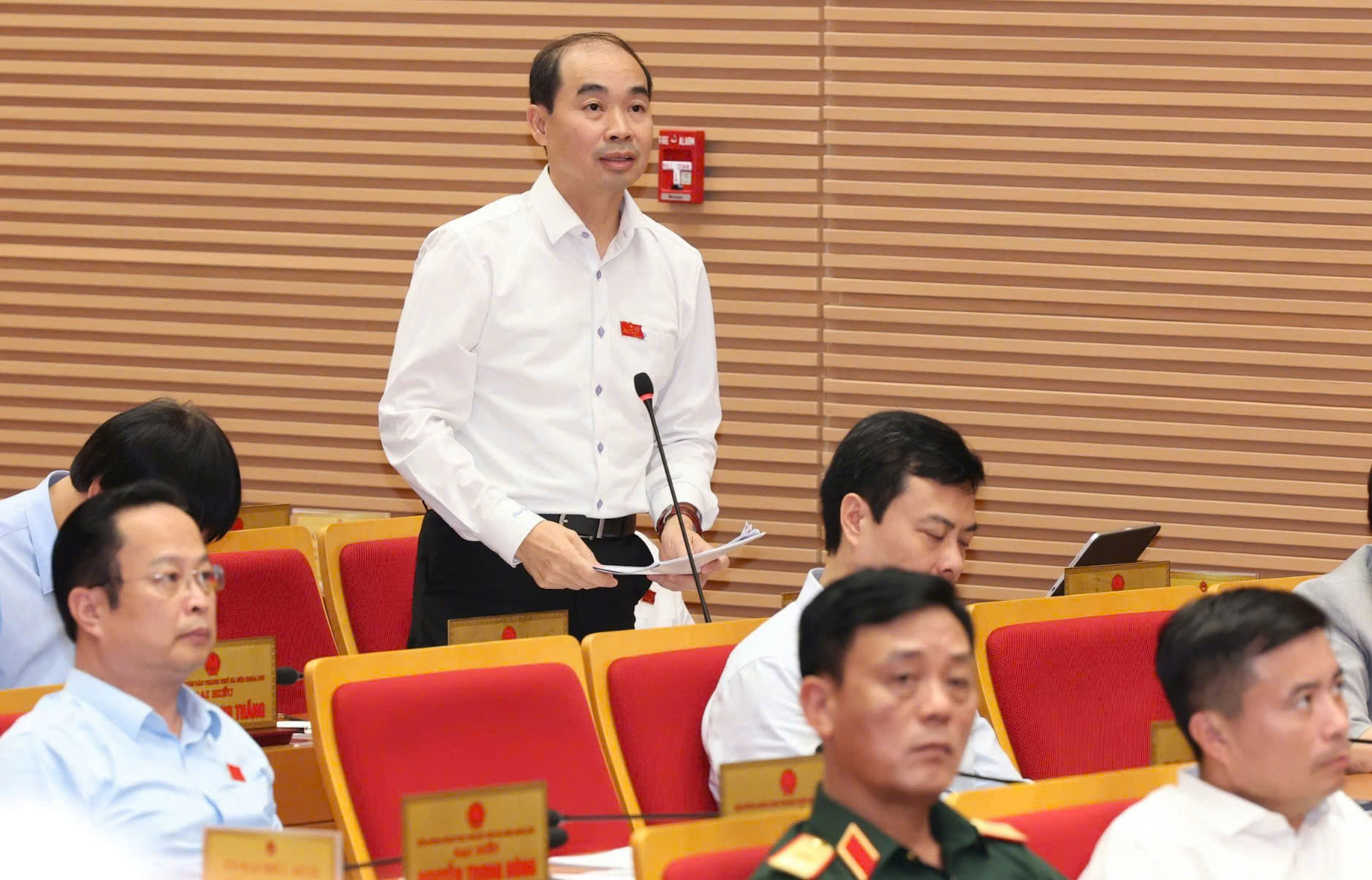 |
Acting Director of the Department of Health, Nguyen Dinh Hung. Photo: Hoang Phong |
Acting Director of the Department of Health, Nguyen Dinh Hung. Photo: Hoang Phong
Following instructions from General Secretary To Lam during a meeting with the Hanoi Party Committee and Notification No. 177 from the Party Central Committee's Office, the city is piloting centralized school lunch programs, a new initiative for the coming period, according to Ha.
"Centralized processing allows for complete control over ingredients, preparation, transportation, storage, and serving. This not only ensures food safety but also reduces intermediary costs and improves consistency and nutrition," Ha said.
The city will also develop menus tailored to students' physical conditions and ages in each area and strictly control food sources from farming, slaughtering, and processing to transportation. The People's Committee is preparing necessary conditions and will pilot the program in the 2025-2026 school year.
700 small-scale slaughterhouses remain
Delegate Tran Khanh Hung mentioned the recent discovery of diseased pork being smuggled into Hanoi's markets and restaurants and questioned how food imported from other provinces is controlled to ensure safety.
Director of Hanoi's Department of Agriculture and Rural Development, Nguyen Xuan Dai, said Hanoi consumes about 500,000 tons of pork annually. The city's farms produce around 60% of this, with the remaining 40% imported from other localities (both domestic and international).
Dai clarified that this doesn't mean the 40% of imported pork isn't controlled. The city has agreements with 43 provinces and cities (before provincial administrative unit rearrangement), 27 of which regularly supply Hanoi. However, he acknowledged the presence of untraceable, smuggled goods from small-scale producers.
 |
Director of Hanoi's Department of Agriculture and Rural Development, Nguyen Xuan Dai. Photo: Hoang Phong |
Director of Hanoi's Department of Agriculture and Rural Development, Nguyen Xuan Dai. Photo: Hoang Phong
Delegate Hoang Thi Tu Anh questioned the city's report, which indicates that over 700 small-scale slaughterhouses in residential areas remain uncontrolled while planned centralized facilities are slow to develop or operate inefficiently.
Nguyen Xuan Dai explained that Hanoi's plan includes 29 centralized slaughterhouses, but only five have been built, and only three operate stably, but below capacity.
He explained that Hanoi has 126,000 farming households, with the second-highest output nationwide. However, farming has been difficult with low profits, while slaughtering costs 100,000-200,000 VND per animal. Land rental and site clearance costs for slaughterhouses are also substantial. Regulations on distance and location also pose challenges.
Elaborating, Vice Chairman Nguyen Manh Quyen said livestock slaughtering has been a long-standing concern. Slaughterhouse planning is complete, but current mechanisms and policies are insufficient to encourage the transition from small-scale to centralized operations. "The main reason is the higher investment and operating costs at centralized facilities compared to small-scale ones, making it difficult for businesses to compete," Quyen said.
The city has assigned the Department of Agriculture and Rural Development to collaborate with relevant agencies to research and propose stronger support mechanisms for the People's Council's consideration at the next meeting to promote centralized slaughterhouse development.
Vo Hai





